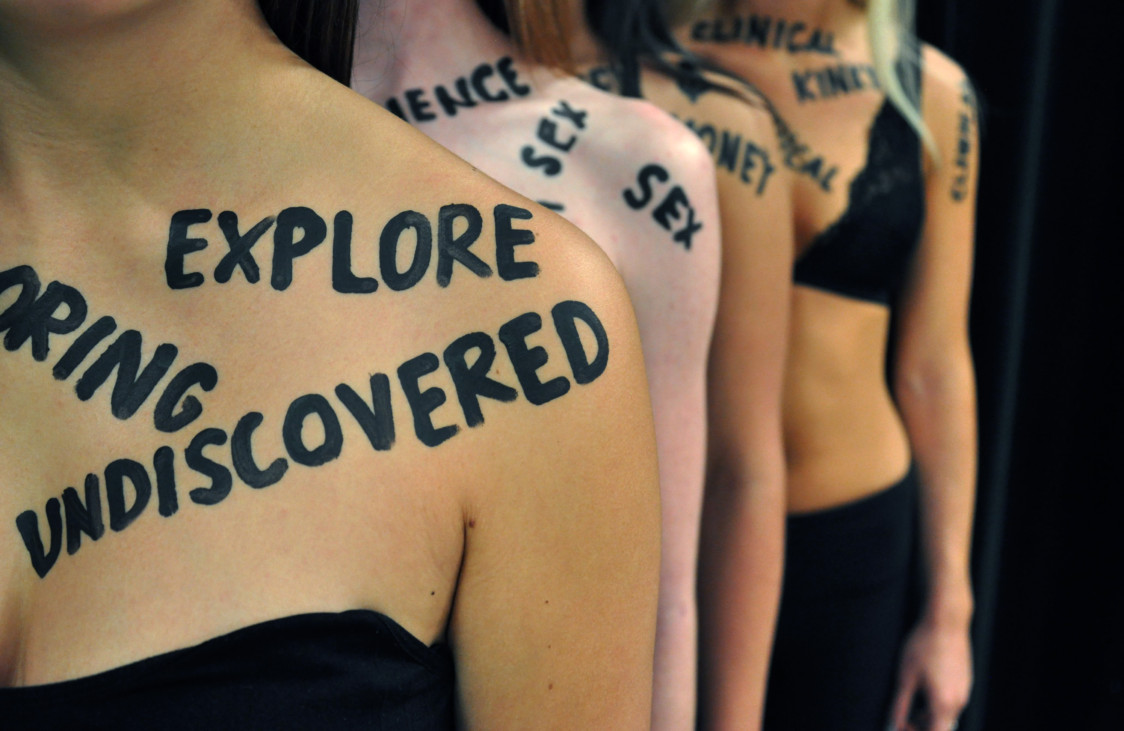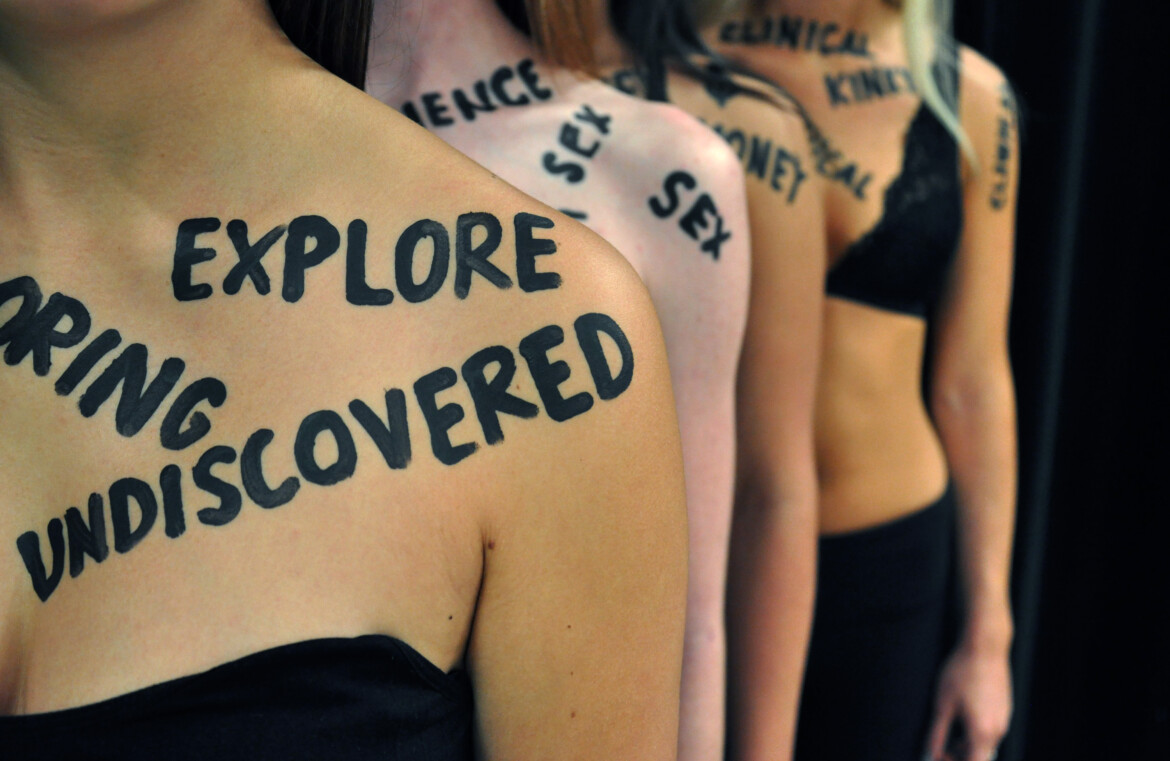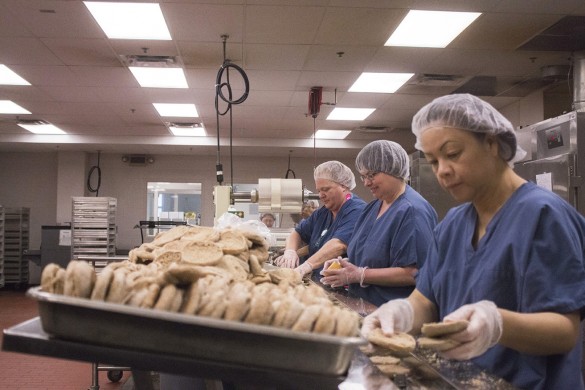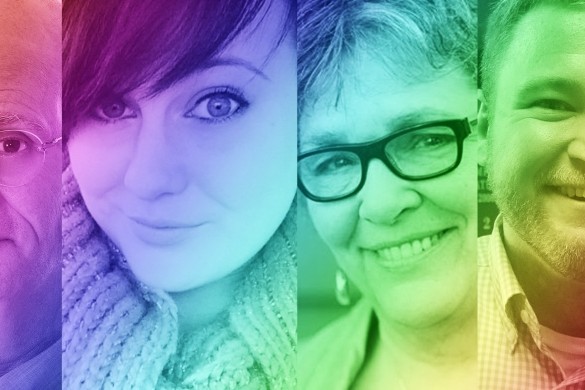
Photo by Emily VanSchmus
Kinsey Institute researchers are working to change the complicated relationship between science and sex
Words by Molly Longman
When Oakland, California-based author Mary Roach released her book about science and sex, Bonk, in 2008, readers and reviewers honed in on one chapter in particular: the section in which she recounted having sex with her husband alongside a London physician holding an ultrasound wand—all in the name of research.
“That was by far the most talked about part of the book in interviews and in reviews,” Roach said. “It was funny and captured people’s imagination because they think about themselves doing that, and they think, ‘My God. How awkward.’ So it’s not in a judgmental way, but people always make comments about it.”
Why was Roach in this uncomfortable, well, position? It all started with wanting to observe a sex study in action—when privacy laws wouldn’t allow for it, she did what any sensible researcher might do. She ponied up and did it herself. She agreed to allow a researcher capture three-dimensional moving picture ultrasound footage of her and her spouse in the act.
Roach said this single chapter of Bonk “gained a life of its own” in part because the act of sex has become more acceptable than the act of researching it. It’s juicier. It’s more subjective. It’s more lucrative. While we fund Hollywood and Playboy magazine, putting money toward the science behind sex, sexuality, and gender is tricker.
We promote and consume sex everyday—whether we’re watching Game of Thrones, fast-forwarding through Bud Light commercials or boning-up on political candidates (pun intended). But if you want to get serious about sex and study, say, naughty habits of the retirement home set, then that’s a tougher sell. There’s a lack of funding and support for sex and sexuality research, in part because we’re more comfortable with talking about sex than digging into the science behind it. Just ask an expert.
Grab Them by the Perception
For someone who “just fell into” sex and sexuality research, Dr. Justin Garcia is extremely well-published. As the associate director for research and education at the Kinsey Institute for Research in Sex, Gender and Reproduction on Indiana University’s campus in Bloomington, he’s had the opportunity to research a diverse array of topics. From hook-up culture to casual sex to “Individual differences in women’s salivary testosterone and estradiol following sexual activity in a non-laboratory setting,” he’s covered a lot of ground in his five years at Kinsey.

The Kinsey Institute has a home in Morrison Hall at Indiana University in Bloomington, Indiana. Photo by Molly Longman.
When you hear about modern hook-up culture out in the wild, you’re likely to hear the words “Netflix and chill” rather than “pair bonding” and “ecology of monogamy.” But Garcia is straight science. He takes his work seriously and sticks to the facts—even if his sentences are often followed by a good-natured chuckle.
And though the Kinsey Institute has allowed him to cover a versatile purview, Garcia believes there’s still a stigma surrounding research explicitly about sex.
“I think sex is changing—the role of sexuality and the way we think about it is changing—but there’s still a lot about it that’s taboo,” he says. “A lot about it that titillates people.”
Roach speculates that this taboo may be, in part, a product of assumptions about people who dedicate their lives to investigating the scientific nature of sex.
“With research, people assume, ‘Oh you went into this field. You must be obsessed with it,’” Roach said.
That perception is only magnified when you’re dealing with a sexy topic like, well, sex. If a researcher chooses to study ecology, entomology or enzymes, that doesn’t seem as odd or obsessive. But people’s eyebrows go up when you talk about sex, Roach says.
At times [sex is] paradoxical because it’s a part of so many people’s lives. These are aspects so central to the human condition and to our health and happiness and well being—but they are things that are still often shrouded in mystery.”
-Dr. Justin Garcia
“They’re kind of trying to look askance at you,” she said. “They’re assuming someone’s a sexual person, rather than someone who finds the topic interesting. It’s part of how our culture deals with or doesn’t deal with sex.”
And many people don’t deal with sex at all. A 2009 Association of Reproductive Health Professionals (ARHP) poll of 304 U.S. healthcare providers found that half of all healthcare providers said sexuality was the least commonly discussed health topic with female patients. The providers discussed sexual health issues with only 39 percent of their female patients. And the Association of Reproductive Health Professionals suggested that “personal embarrassment or discomfort of talking about sex” was one of the major reasons why.
And Garcia says the varying scope of ideological attitudes and comfort levels with the topic of sexuality presents a barrier in his research as well. Americans have a tendency to criminalize sex, treating it like it’s something to be feared—something to be shamed.
“Some people are more permissive about even talking about sexuality than others,” Garcia said. “Some people feel that sexuality is an issue of science. Some people feel it’s an issue of morality.”
The Bank Behind the Bonk
Ideology isn’t the only barrier for sex research. Funding can present a problem too—even at a well established institute like Kinsey.
While other scientific fields receive a bulk of their funding from the National Science Foundation and the National Institutes of Health, much of Kinsey’s funding comes from corporate or private donors.
Though NIH grants fund some of their research, it’s just as likely that a Kinsey study will be funded by the K-Y Brand Touch Initiative (you may know them from the legendary jet-ski lube commercials), Plan B or Match.com.
“We’re probably a little uncommon in the amount of industry and corporate funding we’ve had, but we’ve done it in order to survive—how do you fund sex research?” Garcia said. “You have to be kind of creative and flexible in the ways you get funding. The NSF and NIH don’t tend to fund a lot on human sexual behavior or human sexuality unless it ties to health.”
Federal funding has been historically hard to come by in the world of sex research. In the early 2000s, former Kinsey Institute psychologist Dr. Erick Janssen discovered that his $464,000 of NIH funding was being threatened by a few members of Congress, according to the American Psychological Association. Rep. Pat Toomey (R-Pa.) was working to eliminate Janssen’s funding, which supported a study investigating how negative emotional states could combine with sexual arousal to make some folks more prone to taking dangerous sexual risks than others, as part of an appropriations bill amendment.
And Garcia says this isn’t uncommon.
“People are often a bit shy about sexuality and sex research,” he said. “It’s not been well-funded by federal sources with the exception of work on HIV and AIDS. So then it becomes a question: Do we have to turn everything we do into research about HIV and AIDS or other sexually transmitted infections? Well, no. There’s a whole heck of a lot about sexuality that doesn’t have to do with STIs, but that work has to be funded.”
What We Don’t Know
We, as a society, know very little about sex.
Dr. Amanda Gesselman is calm and almost serene as she discusses this topic that is really quite alarming. She folds her arms across a wooden table in a quaint Bloomington coffee shop. The sun comes through the window, reflecting off the Kinsey Institute assistant research scientist’s silvery hair as she quietly sips from her white to-go cup.
“We don’t know a lot of things,” Gesselman admits. “I mean, for everything that we do know there are a million questions… and there are more unanswered questions than answered questions.”
For example, the lack of funding and stigma around sex research means we’re still fumbling around in the dark about so many sex-related topics, in and out of the bedroom.
Or: “We know that virginity is stigmatized, but we don’t really know why… We don’t know a whole lot about the sort of development issues,” Gesselman says.
Even: “There’s a huge lack of research on minority populations,” she says of the LGBTQ+ population.
And shockingly: “Sexual violence research in particular hasn’t received great funding,” Garcia said. “It’s almost remarkable that that’s the case, but it is the case.”
You can’t open the paper today without seeing stories about sex abuse and assault. Vice President Joe Biden’s involved. Lady Gaga’s involved. The It’s On Us campaign is working to make a change. But we’re still behind the curve on information about sexual violence, even though Kinsey is working to change that, Garcia says.
“I think even if it was funded, there would still be so many questions,” Garcia said. “But the fact that the field hasn’t been lush with funding, there are so many gaps of things we need to better understand.”
A World Driven by Sex
Sex is everywhere. It’s in wet t-shirt contests. It’s in the delivery room as innocent newborns come into the world. It’s in strip clubs and nursing homes. It’s at Hooters. It’s in episodes of “Friends.” It’s in Ariana Grande songs.
And just like anywhere else, it’s in the Midwest. In fact, some argue the Midwest is the epicenter of sex research. The Kinsey Institute is located in southern Indiana. And famed sex researchers William Masters and Virginia Johnson studied the biological mechanisms behind sexual responses at Washington University School of Medicine in St. Louis.

Photo by Emily VanSchmus
“It’s sort of a lazy perception that the Midwest equals small-town, family values.” Roach says. “It’s a gross overgeneralization. I think it’s also a overgeneralization to say that religious people and people in small towns are all conservative about sex, because they’re not. I remember talking to… a Christian organization that made a vibrator or something [while I was doing research for my book]. I expressed some surprise and the guy said, ‘Why?’ And he said God gave us sex to enjoy… He’s one guy, but I think there’s an oversimplification of what the Midwest is.”
Garcia agrees. Though he say he’s found the University of Indiana, Bloomington to be a “bastion of free thinking and open dialogue,” the geographic location can be incongruous.
“In terms of the large political climate, it is kind of funny—I think people don’t always expect the world’s preeminent sex research institute to be in southern Indiana. It certainly is unexpected. It works because we have the support of the university.”
But whether you’re on the coast, in an Indiana college town or having sex on an operating table in London, you can’t escape the fact that sex is everywhere. You can try to tune out sex, but whether it’s on TV or in a doctor’s office, it’s likely to catch up with you. Whether you like it or not. Whether we fund it or not.
We are a hypersexualized society that hates to admit we’re hypersexualized.
“At times [sex is] paradoxical because it’s a part of so many people’s lives,” Garcia said. “These are aspects so central to the human condition and to our health and happiness and well being—but they are things that are still often shrouded in mystery.”











